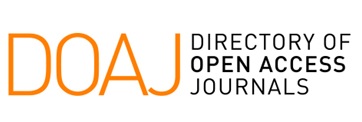THE EFFECT OF SHADOWING TECHNIQUE ON STUDENTS’ SPEAKING FLUENCY AND PRONUNCIATION ACCURACY
Abstract
Speaking fluency and pronunciation accuracy are essential components of oral proficiency in English language learning, especially in English as a Foreign Language (EFL) contexts. This study aims to investigate the effect of the shadowing technique on students’ speaking fluency and pronunciation accuracy in English language learning. The participants consisted of 32 eleventh-grade students from a senior high school in Palembang. The research employed a pre-experimental design with a one-group pretest-posttest approach. The instrument used was a speaking test conducted before and after the implementation of the shadowing technique to measure students' improvement. The statistical analysis revealed a significant increase in scores between the pre-test and post-test. The mean pre-test score of 5.06 increased to 8.81 in the post-test, with a significance value (Sig. 2-tailed) of 0.000, indicating a statistically significant effect. These findings demonstrate that the shadowing technique is effective in enhancing students’ speaking fluency and pronunciation accuracy. Therefore, this technique is recommended as a practical method for improving speaking skills in English as a Foreign Language (EFL) classrooms.
Keywords
Full Text:
PDFReferences
Alshammari, L. (2021). The Effect of Using Instagram on EFL Learners’ Vocabulary Development. International Journal of English Language Education, 9(3), 145–157.
Askhatova A. (2020). Pedagogical Sciences Importance of Vocabulary and Spoken Grammar in Teaching Spontaneous Speaking Skill. Sciences of Europe #, 49.
Celce-Murcia, M., Brinton, D. ., & Goodwin, J. . (2017). Teaching Pronunciation: A Reference for Teachers of English to Speakers of Other Languages. Cambridge University Press.
Ditania, S. (2022). An Anlysys On Students’ Problem In Speaking Skill Faced By The Eleventh Grade Of Social Science Of Sma Negeri 3 Pekanbaru In Academic Year 2019/2020 [Universitas Islam Riau]. https://repository.uir.ac.id/11477/
Foote, J. A., & McDonough, K. (2017). Using shadowing with mobile technology to improve L2 pronunciation. Journal of Second Language Pronunciation, 3(1), 34–56. https://doi.org/10.1075/jslp.3.1.02foo
Fraenkel, J. R., Wallen, N. E., & Hyun, H. h. (2014). How To Design And Evaluate Research In Education (Eighth Edi). McGraw-Hill Education.
GHamada, Y. (2019a). Shadowing: What is It? How to Use It. Where Will It Go? Sage Journals, 50(3). https://doi.org/10.1177/0033688218771380
Hamada, Y. (2019b). Teaching EFL learners shadowing for listening: Developing learners’ bottom-up skills. Routledge. https://doi.org/10.4324/9781315677118
Hamada, Y. (2021). Shadowing Procedures in Teaching and Their Future. The Language Teacher, 45(6), 32. https://doi.org/10.37546/jalttlt45.6-3
Jaya, P. H., Salsabila, A. P., Ismail, D. R., & Paradita, L. I. (2025). Students’ Challenges in Speaking English (A Case Study in the IPIREL of Universitas Muhammadiyah Yogyakarta). ADJES : Ahmad Dahlan Journal of English Studies, 12(1), 47–57. https://doi.org/10.26555/adjes.v12i1.921
Leon, B., Ismael, J., Quichimbo, L., & del Cisne, N. (2024). The shadowing technique for developing english language students’ listening and speaking skills [Universidad de Cuenca]. https://dspace.ucuenca.edu.ec/handle/123456789/45589
Liu, D., Lai, C., Lin, R., & Jin, T. (2025). Pre-Service Teachers’ Technology Integration in Pronunciation Instruction: Professional Identity and Value Beliefs. International Journal of Applied Linguistics, 35(2), 577–589. https://doi.org/10.1111/ijal.12640
Miles, M. ., & Huberman, A. . (2019). Qualitative Data Analysis: An Expanded Sourcebook (2nd ed.). Sage Publications.
Namaziandost, E., Abedi, P., & Nasri, M. (2019). The Role of Gender in the Accuracy and Fluency of Iranian Upper-intermediate EFL Learners’ L2 Oral Productions. Journal of Applied Linguistics and Language Research, 6(3), 110–123. https://www.jallr.com/index.php/JALLR
Nation, I. S. ., & Newton, J. (2020). Teaching ESL/EFL Listening and Speaking. Routledge.
Ningsih, S., Amin, B., & Muhsin, M. A. (2021). The Use of Small Group Discussion in Teaching Reading Comprehension at Junior High School. FOSTER JELT: Journal of English Language Teaching, 2(4), 515–526. https://doi.org/10.24256/foster-jelt.v2i4.63
Olsson, A., & Tbena, A. (2023). Physically oriented learning meets vocabulary acquisition and motivation: how the ESL classroom can combine with PE through cross-curricular collaboration. DIVA. https://www.diva-portal.org/smash/record.jsf?pid=diva2%3A1731436&dswid=-6545
Rao, P. S. (2019). The Importance of Speaking Skills in English Classrooms. Alford Council of International English & Literature Journal(ACIELJ), 401(2), 6–18.
Salim, A., Terasne, T., & Narasima, L. (2020). Enhancing the Students’ Pronunciation Using Shadowing Technique At Senior High School Students. Journal of Languages and Language Teaching, 8(1), 20. https://doi.org/10.33394/jollt.v8i1.2212
Sugiyono. (2021). Metode Penelitian Pendidikan (Kuantitatif, Kualitatif, Kombinasi, R&D dan Penelitian Pendidikan) (A. Nuryanto (ed.); Kedua). ALFABETA, CV.
Thornhill-Miller, B., Camarda, A., Mercier, M., & Burkhardt, J.-M. (2023). Creativity, Critical Thinking, Communication, and Collaboration: Assessment, Certification, and Promotion of 21st Century Skills for the Future of Work and Education. Journal of Intellingence, 11(3), 54. https://doi.org/10.3390/jintelligence11030054
Tran, N., Hoang, D. T. N., Gillespie, R., Yen, T. T. H., & Phung, H. (2024). Enhancing EFL learners’ speaking and listening skills through authentic online conversations with video conferencing tools. Innovation in Language Learning and Teaching, 1–11. https://doi.org/10.1080/17501229.2024.2334809
Yang, F., Li, K., & Li, R. (2024). AI in Language Education: Enhancing Learners’ Speaking Awareness through AI-Supported Training. International Journal of Information and Education Technology, 14(6), 828–833. https://doi.org/10.18178/ijiet.2024.14.6.2108
Yavari, F., & Shafiee, S. (2019). Effects of Shadowing and Tracking on Intermediate EFL Learners’ Oral Fluency. International Journal of Instruction, 12(1), 869–884. https://eric.ed.gov/?id=EJ1201305
DOI: https://doi.org/10.32502/ecj.v9i1.9808
Refbacks
- There are currently no refbacks.
Copyright (c) 2025 English Community Journal
The Departement of English Education, Faculty of Teacher Training and Education, Universitas Muhammadiyah Palembang
Jl. Jenderal A. Yani 13 Ulu, Seberang Ulu II, Palembang (30263), Indonesia.
Indexed by :
English Community Journal has been listed in :

English Community Journal by http://jurnal.um-palembang.ac.id/index.php/englishcommunity is licensed under a Creative Commons Attribution-ShareAlike 4.0 International License.







